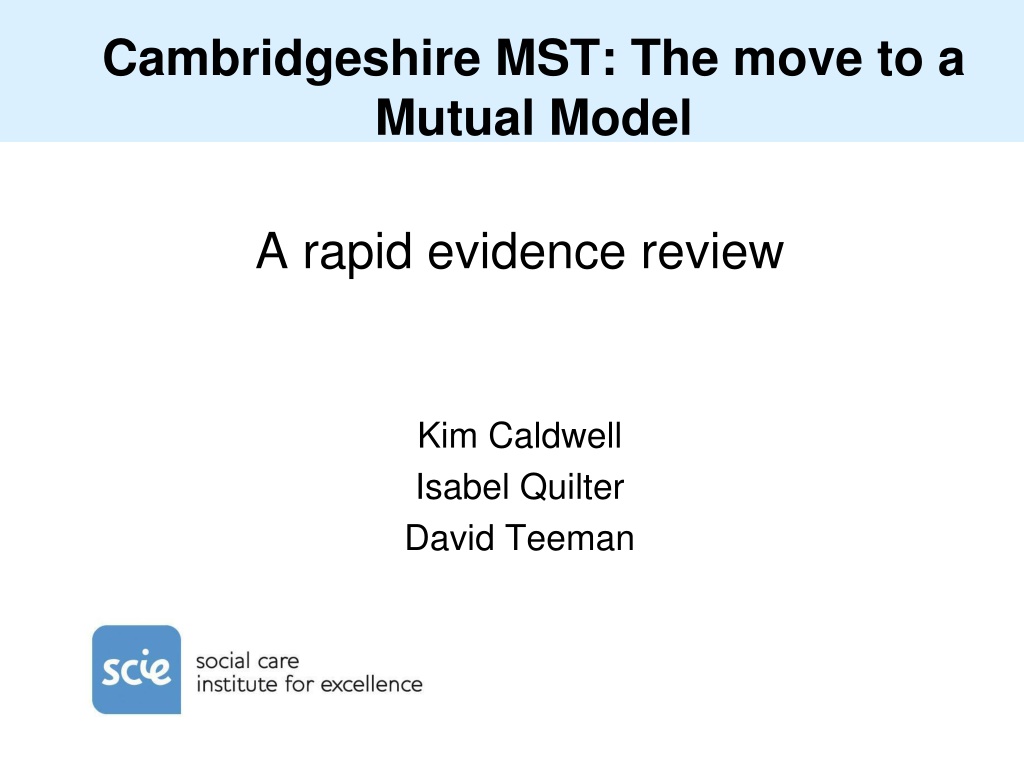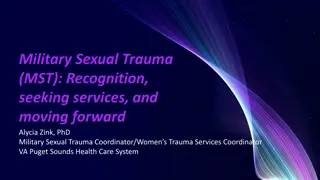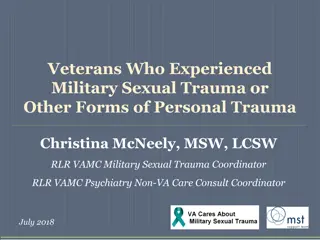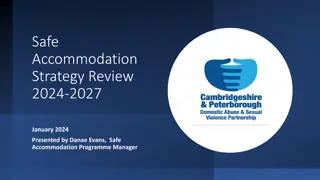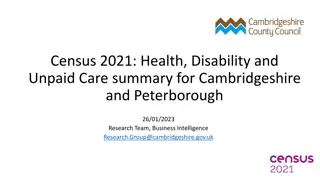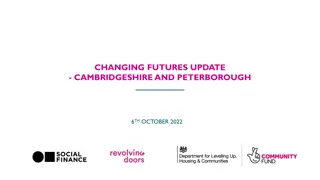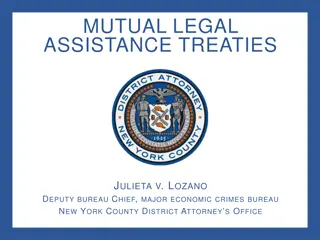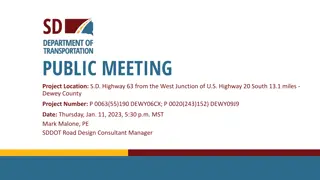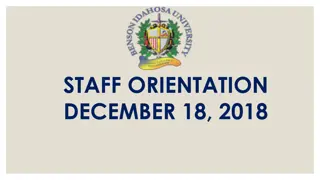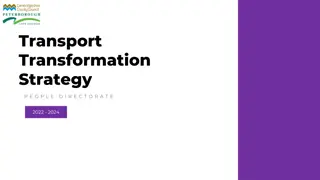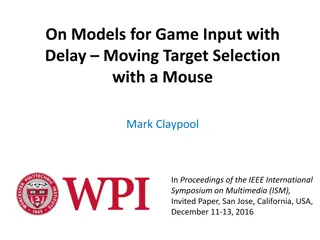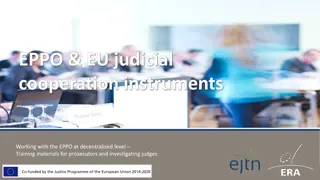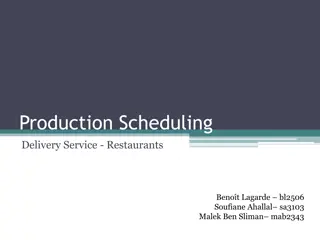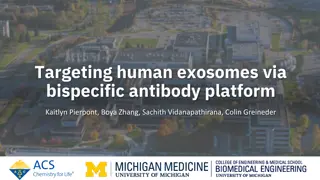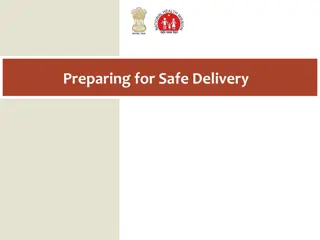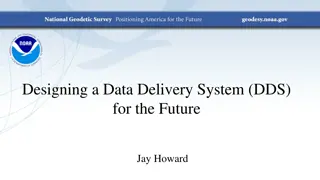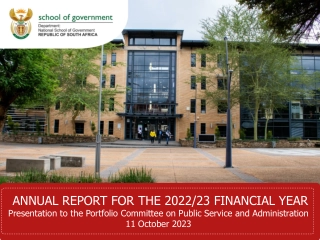Cambridgeshire MST: Moving Towards a Mutual Model for Public Service Delivery
Cambridgeshire MST explores the shift to a mutual model for public service delivery to improve outcomes for children in care. The rapid evidence review highlights key statistics, the move towards a mutual mode of delivery, and the reasons behind choosing this approach. By creating a public service mutual, they aim to enhance service delivery and support effective implementation across a broader geography.
Uploaded on Sep 11, 2024 | 0 Views
Download Presentation

Please find below an Image/Link to download the presentation.
The content on the website is provided AS IS for your information and personal use only. It may not be sold, licensed, or shared on other websites without obtaining consent from the author. Download presentation by click this link. If you encounter any issues during the download, it is possible that the publisher has removed the file from their server.
E N D
Presentation Transcript
Cambridgeshire MST: The move to a Mutual Model A rapid evidence review Kim Caldwell Isabel Quilter David Teeman
Format of review Key stats/background Aims and objectives Review questions Methods What this review is not Addressing the key review questions So what? /Implications of the evidence
Key stats In the year to March 2014, over 30,400 children started to be looked after by local authorities in England, and the number of new entrants to care is increasing Of these children, 28% were aged 10-15 The majority of these children became looked after on s.20 placements due to their own disruptive behaviour/other relevant CIN categories Outcomes for children in care are notoriously poor: 15.3% of LAC achieved 5 A*-C GCSEs in 2013 compared to 58% overall, 40% of prisoners under 21 were in care as children, and children in care are 4- 5 times more likely to have mental health issues than their peers The cost to the public purse of looking after a child is estimated to be around 36,524
Cambridgeshire MST: towards a mutual mode of delivery In 2001, Cambridgeshire County Council implemented the first MST team in Great Britain, with the aim of preventing adolescents from entering custody and then expanded to those at risk of entry to care A local research sample of 57 cases eligible for MST between January 2009 and November 2010 demonstrated significant improvement in outcomes in both the number of days in care and the continued involvement in services between the MST and non-MST groups at 12 month follow up Since 2013, Cambridgeshire County Council has been considering the possibility of spinning out the MST service to allow for freer expansion After a thorough assessment process, it has become apparent that a public service mutual is the most sensible option This new independent organisation will both provide both clinical service delivery and consultancy services to support effective implementation across a broader geography
Why a mutual mode of delivery? There is increasing interest in using mutuals to deliver public services. This is due to:- The Government s commitment to creating a Big Society through introducing a greater diversity of public service providers, and; a view held by many authorities that mutuals could be a possible way to sustain local public services during a period of unprecedented public spending cuts (Proof of Delivery? A review of the role of co-operatives and mutual in local service Provision)
Aims and objectives The aims of this rapid review were to:- Provide a basis for answering the questions of knowing why, how, who, what works and how much Identify key documentation to ensure that the study builds on and links to current available best evidence, and; in doing so, address the key review questions
Review questions 1. What evidence/information exists that helps contextualise and understand the issues, including potential concerns and barriers, for those implementing a mutual model of MST delivery? 2. What evidence exists around what works to develop and deliver the mutual mode of delivery? 3. What data is available at national and local levels that can be used by the MST to evaluate impact and outcomes? 4. What opportunities may exist to benchmark mutual modes of delivery with other schemes (nationally and internationally)? 5. What are the main gaps in the evidence base related to the mutual mode of delivery?
Methods Initial sift and selection (on the basis of relevance and quality) Categorisation (according to relevance to review foci and themes, as well as type and quality) Analysis of abstracts/selected documents Reporting i.e. this review
What this review is not A literature review; the main difference being that a rapid review has a much narrower focus, using tighter parameters An evaluation of the efficacy of the MST approach or the mutual delivery model; rather, the aim of the review is to identify original strategic intentions and intended delivery of the mutual model
Addressing the review questions 1. What evidence/information exists that helps contextualise and understand the issues, including potential concerns and barriers, for those implementing a mutual model of MST delivery?
Concerns: costs of MST Are there benefits to local services and costs of social provision? There is an urgent need for clinically effective and cost-effective methods to manage antisocial and criminal behaviour in adolescents (Fonagy et al., 2013) Evidence shows that MST has scope for cost-savings when compared to other statutory interventions For example, a study by Cary et al., (2013) which compared MST with usual services provided by two youth offending teams (YOT) found that, at 18-month follow-up, the MST+YOT group cost less in terms of criminal activity ( 9,425 versus 11,715, p = 0.456)
Concerns: costs of MST Are there benefits to local services and costs of social provision? Cost analysis of providing MST in Washington State Juvenile Courts was conducted (Barnoski, 2009).This included:- The direct cost of delivering the program Quality assurance, and; some indirect costs, such as transportation Also driving costs were the hours of service (16 weeks) Total Service and Court Costs per Youth: $7,076 MST service delivery may be higher than the cost of other programs, however, reported benefits ($23,856) considerably outweigh the costs
Transportability: opportunities for benchmarking A New Zealand study which looked at the transportability of MST, found this to be clinically equivalent to findings from MST studies conducted in the United States with juvenile offenders Similarities in benchmarked indicators suggest that MST was responsible for changes across treatment, and positive treatment outcomes identified in RCTs may be able to be transferred to publicly funded not for profit clinics (Curtis et al., 2009)
Transportability: opportunities for joining-up of organisations Research indicates that the MST transport strategy supports the cultivation of therapist, supervisor and consultant adherence in usual care settings Such adherence is a consistent predictor of short and long-term outcomes Organisational factors also affect adherence and outcomes For example, significant effort must be invested in the development and maintenance of active collaborations with both the leadership and the line staff in public and private service sectors (Schoenwald, 2008; Schoenwald & Hoagwood, 2001)
2. What evidence exists around what works to develop and deliver the mutual mode of delivery?
What makes mutuals work successfully? Research has found that, for mutuals to contribute positively to public service delivery, certain conditions must either be present or absent in specific combinations (Proof of Delivery? A review of the role of co-operatives and mutual in local service Provision) Evidence suggests that these conditions are:- A contract length of 5 years or longer, which also locks in previous benefits Buy in from staff and/or citizens Support, advocacy and expert advice
What makes mutuals work successfully? Circumstances in which mutuals have also had a positive impact include:- Membership open to all; Ability to raise finance; Concern for social, economic and environmental wellbeing; Low resource base
3. What data is available at national and local levels that can be used by the MST to evaluate impact and outcomes?
Impact and outcomes of mutuals on services Impact and outcomes have been evaluated in a number of mutual model case studies An example from Oldham Community Leisure has demonstrated a range of positive impacts including:- Staff developing skills through training and getting involved in the running of the board Meaningful interaction between stakeholders on the board, as it was made up of staff, service users and representatives of relevant sectors Clear accountability in the form of democratic and open process of decision making
MST impact and outcomes studies A number of RCTs have shown that MST is effective in reducing youth antisocial behaviour Huey, Henggeler, Brondino and Pickrel (2000) have identified two key factors that mediate the impact of MST:- Therapist adherence to the model (which is associated with improved family functioning and decreased delinquent peer affiliation, and, in turn, decreased delinquent behaviour) Changes in caregiver discipline practices and youth association with deviant peers (which is associated with reduced antisocial behaviour)
MST impact and outcomes studies Both clinical and qualitative trials with families have demonstrated that the therapeutic relationship and model of working are key to families engagement, and, thus, a range of outcomes These include benefits beyond reductions in youth offending and antisocial behaviour, such as:- Increased parental confidence and competence in parenting Improved parental mental health and outlook on life Improved relationships Reduced substance use, psychiatric symptoms and out-of-home placements The young person being back in education (Henggeler, 2011; Tighe et al., 2012)
MST impact and outcomes studies: international findings RCTs from Norway and Canada show that at post-treatment, youth randomised to MST demonstrated a greater decrease in:- Both internalising and externalising Behaviour problems Self-reported criminal activity, antisocial beliefs and attitudes Frequency and length of stays in out-of-home placements than youth receiving usual services Long-term outcomes from Norway indicated that at 2 years post-intake, youth who received MST continued to demonstrate these effects These findings suggest favourable MST outcomes can generalise across cultural and ethnic groups, and across international borders (Schoenwald et al., 2008)
4. What opportunities may exist to benchmark mutual modes of delivery with other schemes (nationally and internationally)?
Implementing evidence-based programmes in children s services: key issues for success/benchmarking Evidence suggests that a carefully planned and well-resourced implementation is key to better outcomes and programme success One of the best known implementation frameworks was developed by Fixsen and colleagues (2005) This takes the view that to implement innovative programmes, change is required at the practitioner, supervisory and administrative support levels, as well as at the system level The authors suggest there are four key stages to implementation:- Exploration and adoption Installation Initial implementation, and; full operation
Implementing MST: key issues for success/benchmarking A number of MST trials have provided evidence that fidelity to the programme leads to better results (Henggeler et al 1997) In response, the originators of MST have developed strict treatment protocols and adoption criteria (e.g. maintaining rigorous training procedures and a high level of contact including weekly telephone consultations) Fidelity is also measured through the use of the MST Therapist Adherence Measure (TAM), a 28-item questionnaire completed by parents at regular intervals during the intervention MST has since been implemented in the UK, Australia, New Zealand, Canada, Denmark, Ireland, Netherlands, Norway, and Sweden
Experts in public sector cost benefit delivery analysis: mapping benchmarking opportunities One approach to cost benefit analysis (CBA) has been developed by New Economy, and local authorities and other public sectors across Greater Manchester based on existing best practice Partnerships across Greater Manchester and in other areas of the UK are using this model to appraise and evaluate interventions, and support decision making on investment approaches across public, private and third sector agencies This approach to CBA has been developed as a flexible methodology that can be used before, during and after project delivery
Experts in public sector cost benefit delivery analysis: mapping benchmarking opportunities Another study has advocated the use of a hybrid strategy, which seeks to add value whilst also having a cost base that permits low prices relative to competitors The success of this strategy depends on the ability to deliver enhanced benefits to customers together with low prices, which can be sustained through a low-cost base to realise sufficient margins for reinvestment into bases of differentiation This strategic approach to service provision also enables providers to sustain quality of provision within acceptable budgets through an emphasis on both value and cost relative to competitors (Hodgkinson, 2013)
5. What are the main gaps in the evidence base related to the mutual mode of delivery?
Gaps in evidence relating to the mutual mode of delivery The evidence for the benefits of mutual operating in a local government is limited More evidence is needed to demonstrate:- Conclusive improvements in services That savings can be made, or; that benefits in engagement and accountability will follow (Mutual and cooperative approaches to delivering local services)
So what?: What does the evidence mean for MST mutual delivery? Successful mutual delivery is dependent upon a complex set of conditions A sustained and active process of implementation is required to achieve high fidelity with what has been proven to benefit users CBA that can be used before, during and after project delivery may be the best approach (i.e. to track whether interventions are meeting the original objectives of the project, and allow adjustments to be made if required)
Contact details David Teeman David.teeman@scie.org.uk / 020 7766 7366 www.scie.org.uk
